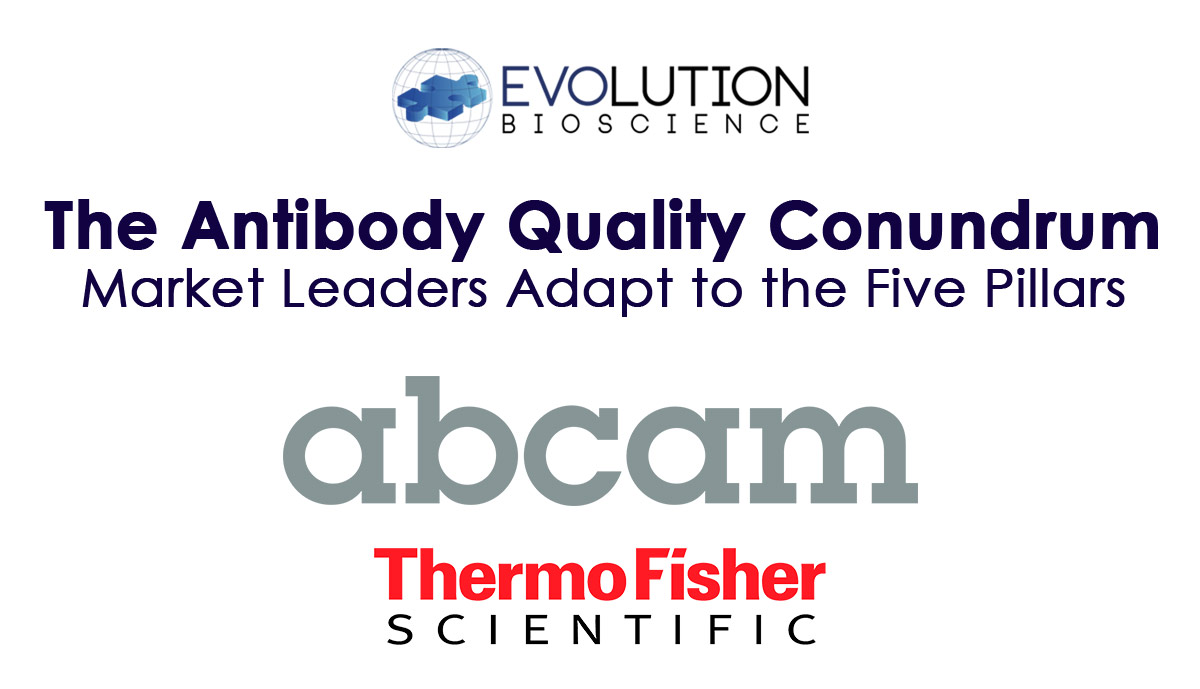
In September 2016 the International Working Group for Antibody Validation (IWGAV) finally announced their five conceptual pillars, outlining recommendations to mitigate the antibody specificity and reproducibility crisis that has plagued researchers for decades.
There is no doubt that antibody quality is a serious concern for the research community, with many scientists asserting that poor quality as defined by ‘fitness for purpose in its application’ is a key contributor to the ‘experimental reproducibility crisis’. Just how we have arrived at this situation is a combination of many factors including the structure of the industry, the types of antibodies used, constrained research budgets resulting in the need for low-cost experimental approaches, and increased pressure on scientists to produce results quickly at the expense of sufficient assessments of the quality of their research.
The recent publication of the five pillars is a much-needed step in defining quality standards, though it remains unclear who is responsible for enacting the required changes. Ideally the onus will be on the industry to carry out such improvements, however it is important to realise that the industry is highly diverse with some 320 players worldwide encompassing complex supply chains, and some 250,000 to 500,000+ antibodies to be assessed.
Enacting the five pillars will require significant capital that only leading players such as Abcam, Bio-Rad, Merck and Thermo Fisher can afford, and will subsequently result in significant increases in pricing for consumers. Smaller entities are unlikely to be able to match such moves, and may well exit the market completely or become solely OEM suppliers to larger entities. Ultimately the research budget and pressure equation needs to be addressed also.

It is notable that Abcam and Thermo Fisher are the first two major players to actively carry out five pillar enhanced QC of key antibodies. In September 2015, prior to the official publication of the five pillars, Abcam introduced knockout (KO) validation at scale, using human KO cell lines generated from haploid cellular models employing CRISPR/Cas9 to develop an increasing range of KO-validated antibodies that includes recombinant monoclonals. Following the announcement of IWGAV’s five pillars in September 2016, Thermo Fisher announced that they will assess antibody specificity using immunoprecipitation combined with mass spectrometry (IP-MS).
As the process continues to evolve it is likely to throw up some unpleasant facts such as the realisation that many polyclonals, which constitute the highest category of research grade antibodies currently in use, are not suitable for certain experiments. Indeed, this may well also happen with some murine monoclonals, the second highest category in use.
Industry leaders such as Abcam and Thermo Fisher are rapidly adapting to the changing market dynamics, with both companies having launched improved product lines. The murine monoclonal issue may throw open the doors for Abcam’s Rabmab© and Thermo’s ABfinity™ antibodies, both of which utilise rabbits and offer superior antigen recognition than murine counterparts. Other approaches that utilise nucleic acid aptamers and protein scaffolds may well preferred in some cases, with the additional advantage that they can target proteins that may remain inaccessible to antibodies.
Whilst the IWGAV five pillars offer strong strategic recommendations for antibody quality going forward, the industry is only in the early stages of adapting and significant investment, research and cooperation will be required to truly address the ongoing issues plaguing researchers. Just how the industry progresses from here remains to be seen.
You can download a PDF copy of our Antibody Quality Timeline Infographic via the button below:





